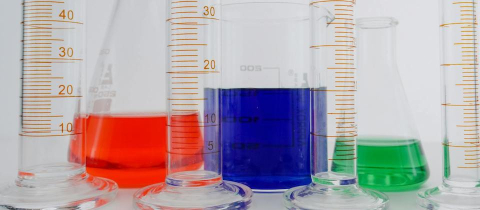The ancient Greeks did not have a good grasp of genetics. A giraffe, they thought, was a cross between a camel and a leopard, and an ostrich was the result when a camel mated with a sparrow. A tough task for the bird, one would think. Why did they hold such beliefs? Because in the absence of facts, imagination stepped in. And it still does. A recent survey showed that a third of all Europeans believe that tomatoes only contain genes if they have been genetically engineered. Otherwise they are “gene-free” and one would guess, in their eyes, “risk free.”
Such surveys are undertaken to gauge public reactions to genetically modified foods, the hottest potato in the area of food safety to come our way probably since the introduction of pasteurization in the early 1900s. Activists back then advised people to spurn the new process because it destroyed the nutritional qualities of the milk and even described the horrors that could arise from consuming “dead bacteria.” The truth of course was that live bacteria were the ones worth worrying about. Of course, there are still holdouts who promote raw milk. They can have it.
Today’s boogey man is not pasteurization but genetic modification. Just about everyone has an opinion on the subject, but much too often this opinion is based on hearsay and emotion rather than on scientific data. Consumers speak of “Frankenfoods” and activists attack and destroy experimental fields planted with modified crops while at the same time they clamor for more research into the effects of such crops.
I am not going to suggest that there aren’t some contentious issues about genetic modification. Of course there are, just like with any new technology. And I’m certainly not going to say that scientists can absolutely guarantee that genetic modification of foods will have no pitfalls. Nobody can make such a guarantee. Indeed, demanding unqualified assurance about the safety of genetically modified foods is just plain naive. We don’t make such demands in other aspects of life. We don’t say that we will not fly in an airplane unless we are assured that it will not crash because we realize that this would be an absurd request. We fly because in our mind we know that the benefits outweigh the risks. This is also how we have to look at genetically modified foods.
First of all, let’s understand that just because something may be good for Monsanto, Novartis, AstraZeneca or any other company involved in biotechnology, it isn’t necessarily bad for the public. But if you listen to some alarmists, you can get the impression that these companies are trying to foist poisons on us purely for the sake of profit. Of course, there is a buck to be made. But profits come with the production of good and useful products. No company wants to undermine its existence by marketing dangerous substances. A great deal of of research has gone into genetic modification and its safety aspects. Many of the potential problems that are now being vocalized by opponents were in fact addressed long ago by the industry. The testing for allergens in modified foods has been going on since the inception of the technology. In one case, the addition of a Brazil nut gene to soybeans in order to increase the quality of the protein for improved animal feed resulted in the transfer of an allergen. In other words, someone with a Brazil nut allergy could have reacted to eating the genetically modified soybeans. But the problem was picked up in routine testing and the soybeans, which had been intended to be used for animal feed only anyway, were never marketed.
We should also note that this presents quite a different scenario from non-genetically modified food. We don’t ban peanuts, or strawberries or fish because some people have allergies to these foods. And these allergies are far more prevalent than the theoretical allergies to modified foods. Indeed, it may be possible to genetically modify peanuts to eliminate the protein that is responsible for allergies.
Opponents of genetic modification suggest that we should be satisfied with the normal process of cross-breeding plants to produce improved varieties. But where is the guarantee that this procedure doesn’t introduce undesired chemicals? Appropriate cross-breeding can, for example, yield plants that are more resistant to insects. And why don’t insects attack them? Because these plants contain more natural toxins than other plants. Nobody knows the human consequences of eating these natural pesticides. Why are the activists not demanding that all hybrid plants, or indeed, that all plant foods be tested for natural toxins?
Let me allow for the possibility that genetically altered foods may present some yet unidentified risk. One can always conjur up some theoretical catastrophe. But let’s, however, compare this to the very real benefits that genetic modification can offer. Combatting malnutrition, for one. When people think of malnutrition, they usually think of starving children. But that is not the only kind of malnutrition out there. In fact the most common kind of malnutrition in the world is iron deficiency. This can cause intellectual impairment, suppressed immunity and complications in pregnancy. There are millions of people in the world who suffer from iron deficiency anemia! Most of them subsist on rice as their dietary staple, a grain that contains very little iron, and the iron it does contain is unabsorbable because of the presence of substances called phytates. These compounds bind iron in the digestive tract and substantially prevent it from being transported across the intestinal wall into the bloodstream.
Genetic modification has resulted in a variety of rice that has more iron. This was accomplished by inserting a gene isolated from the French bean into the DNA of the rice. This particular gene codes for the synthesis of a protein called ferritin, which is an iron storage protein. In other words, the rice now can incorporate more iron from the soil. Furthermore, another gene, this time from a fungus, which codes for an enzyme that breaks down phytates was also incorporatedthereby making iron more available.
Populations that subsist on rice also suffer from vitamin A deficiency. That’s because rice is very low in beta-carotene, the body’s precursor for vitamin A. Deficiency of this vitamin is a major cause of blindness in the developing world; it is estimated that some 250 million children have vitamin A levels low enough to cause impaired vision. Lack of vitamin A also predisposes to various cancers and skin problems.
This problem was addressed by introducing into rice four genes which code for proteins that enhance beta-carotene synthesis, two from daffodils and two from a bacterium. The rice is yellow, clearly demonstrating that it is now fortified with beta-carotene. Experiments are under way to cross the iron-rich rice with the beta-carotene-rich rice to produce a variety of super rice that can alleviate nutritional problems that affect billions of people!
There are many other fascinating possibilities. How about genetically modifying foods to contain higher levels of cancer-fighting compounds such as sulphoraphane found in broccoli? Or fresh fruits and vegetables with improved shelf lives? Edible vaccines? Crops that will flourish is salty soil? All realistic possibilities.
But I can hear the critics’ minds churning away. Why am I not talking about Monarch butterflies being killed by corn that has been engineered to contain a gene from the Bacillus thuringiensis (Bt) bacterium to protect it against the European corn borer? Or the possibility of weeds developing resistance through cross pollination from crops that have been genetically engineered to be herbicide resistant? Or a study that claimed rats fed genetically modified potatoes developed gastric problems? Simply because in my judgement, based on the available scientific literature, these concerns have been addressed and either found to be unrealistic or solvable. Surrounding a corn field with a few rows of non-Bt corn, for example, minimizes the Monarch butterfly problem.







